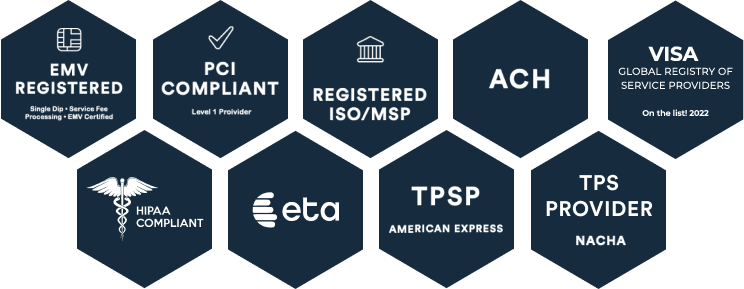The COVID-19 pandemic thrust the healthcare industry into the spotlight. Under intense circumstances, industry leaders pushed themselves to the limits to accommodate an entirely new way of life. What used to be a business largely unmoved by the world’s advances (in comparison to other industries) was now innovating at an unprecedented rate.
They’re shaping the way it works. This conversation is important because patients are less loyal to their providers. One survey found that 75% of patients are satisfied with their telehealth experience, but more than half would change providers for a better experience.
New ways of handling billing and payments emerged among all of these innovations. This vital piece of the puzzle is often overlooked regarding overall patient experience, but 49% of patients say they would switch providers for a better payment experience.
So, how can you provide a competitive and seamless payment experience for your patients? The answer is in the trends. As we barrel onwards into the last quarter of the year, here are the top 4 trends in healthcare payments that can help you craft an elevated patient experience.
1. Paperless Processes
With 74% of patients preferring online payment options, many providers are going paperless, and it’s easy to see why. Paper systems can’t replicate the convenience of paperless billing processes. Many other industries are switching to paperless systems, which means your patients are used to, and (most of the time) prefer that method.
When digital payment options are available, 27% of patients pay bills when businesses are closed. That means your business is more likely to collect payments promptly when compared to traditional methods that rely on your doors being open to receiving them.
2. Digital Communication
Digital communication is on the rise everywhere you look, and patients prefer it over mail or phone calls. Using email or texts to remind patients about upcoming bills has been shown to increase timely payments.
77% of patients want healthcare technology to be more like what they use every day. They expect a seamless experience for bill payments, whether they’re using a laptop, smartphone, or tablet.
3. Interest-Free Payment Plans
Medical debt is a growing issue and trend in patient payments. Some organizations have introduced interest-free payment plans to accommodate the rising costs and increasing concern amongst patients.
The results of these implementations speak for themselves. 76% of patients say they’ll pay on time when offered such a payment plan. For organizations that offered multiple options for plans, there was an increase in payments received on time.
4. No Surprises Act
The No Surprises Act went into effect in January 2022, effectively protecting patients from surprise bills.
A surprise medical bill is for a procedure or service that, unknown to the patient, was out-of-network. The patient would be responsible for the remainder of the cost not covered by their insurance.
When patients are confused about their charges and don’t have previous knowledge of the bill, they’re much less likely to pay. It’s also frustrating for patients when they receive multiple bills from the same procedure without clear context.
This is where the No Surprise Act comes in. It bans:
- Surprise bills for emergency services from out-of-network providers
- Out-of-network cost-sharing (such as out-of-network coinsurance or copayments) for emergency and some non-emergency services
- Out-of-network charges and balance bills for supplemental care by out-of-network providers that work in an in-network organization
Due to the No Surprises Act, providers and organizations are taking extra time to ensure all billing processes are thorough. They’re required to explain to each insured patient their new protections against surprise bills. Patients who aren’t insured are entitled to a “good faith estimate” (GFE) before any service.
Provide an Elevated Payment Experience with CORE
The revenue cycle for healthcare organizations can be complicated for providers and patients alike. CORE’s payment managing platform cuts through the confusion and streamlines the process.
Automate your payment process, offer digital payment options for patients, and manage your revenue cycle. Free up your time and resources to better focus on the care of your patients.






